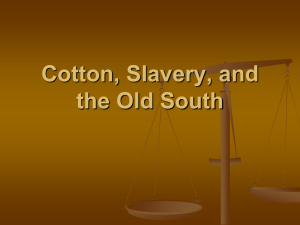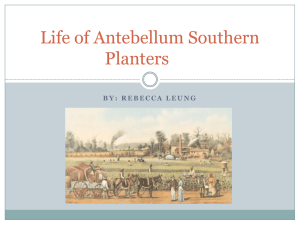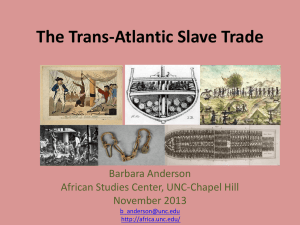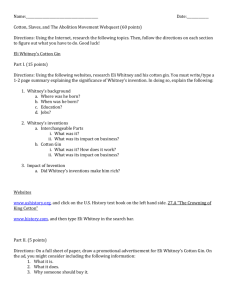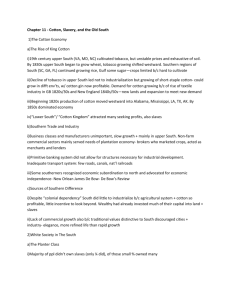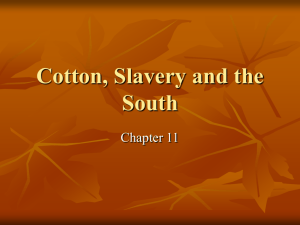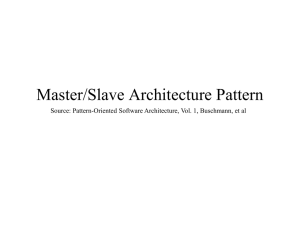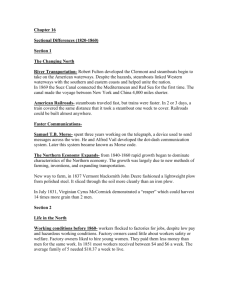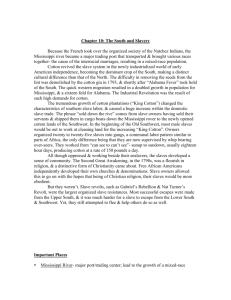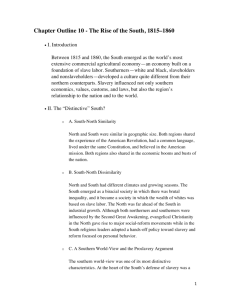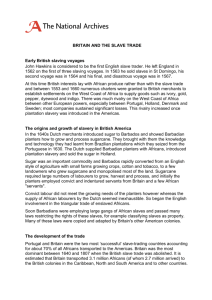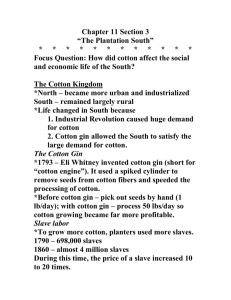Chapter 12 Henretta Power Point
advertisement
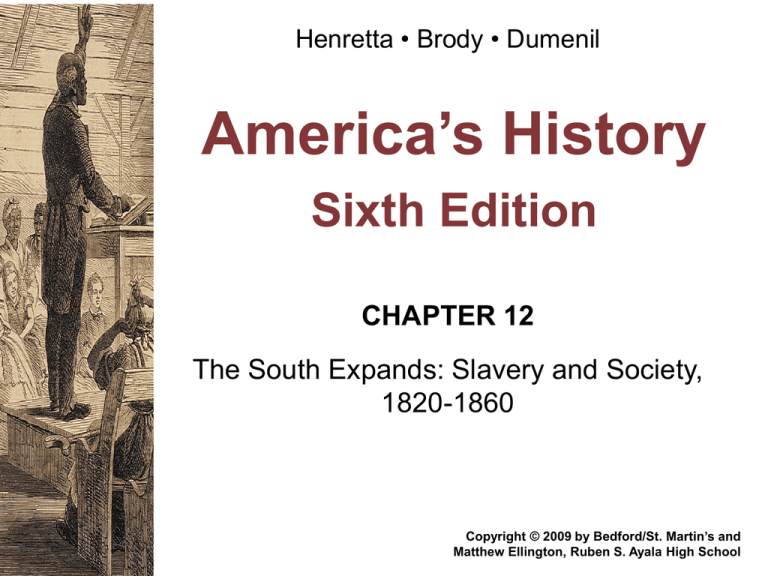
Henretta • Brody • Dumenil America’s History Sixth Edition CHAPTER 12 The South Expands: Slavery and Society, 1820-1860 Copyright © 2009 by Bedford/St. Martin’s and Matthew Ellington, Ruben S. Ayala High School Chapter 12: The South Expands, Slavery and Society, 1820-1860 1. Creating the Cotton South A. The Domestic Slave Trade B. The Dual Cultures of the Planter Elite C. Planters, Smallholding Yeomen, and Tenants D. The Politics of Democracy 2. The African American World A. Evangelical Black Protestantism B. Slave Society and Culture C. The Free Black Population Part 1: Creating the Cotton South 1A: The Domestic Slave Trade • Government helped the expansion of slavery: Louisiana Purchase, Indian removal, Texas, Mexican War • 1 million slaves moved south or west, 1800-1860 – 60% sold via coastal or inland networks – 40% moved with their masters • Most slave families remained intact despite hardships Part 1: Creating the Cotton South 1B: The Dual Cultures of the Planter Elite • 3,000 families owned more than 1,000 slaves each • Tobacco and rice planters lived as aristocrats • Cotton entrepreneurs lived more simply and the slaves worked much harder, especially with gang-labor Antebellum Plantation Part 1: Creating the Cotton South 1C: Planters, Smallholding Yeoman, and Tenants • 5% Planter Elite (20+ slaves) • 5% Middle-Class Planters (6-20 slaves) • 15% Smallholders (1-5 slaves) • 35% Yeomen (landowners, no slaves) • 40% Tenants or Laborers (no slaves, no land) Part 1: Creating the Cotton South 1D: The Politics of Democracy • Politicians appealed to the white voting masses • South’s standard of living was 80% national average • Despite its wealth, the South remained economically dependent on the North, England Part 2: The African American World 2A: Evangelical Black Protestantism • Synthesis of African and American cultures, brought to the South by the Second Great Awakening • Distinctive and joyous brand of worship (e.g. negro spirituals, ring shout) African-inspired slave dance Preacher in an AME Church Part 2: The African American World 2B: Slave Society and Culture • Slave society became more homogenous • Strong families and communities gave some stability • Slave resistance took many forms and caused masters to modify their harsh tactics Part 2: The African American World 2C: The Free Black Population • Free blacks in the north had few political rights • Free blacks in the south lived mostly in the upper south and along the coast and feared re-enslavement




